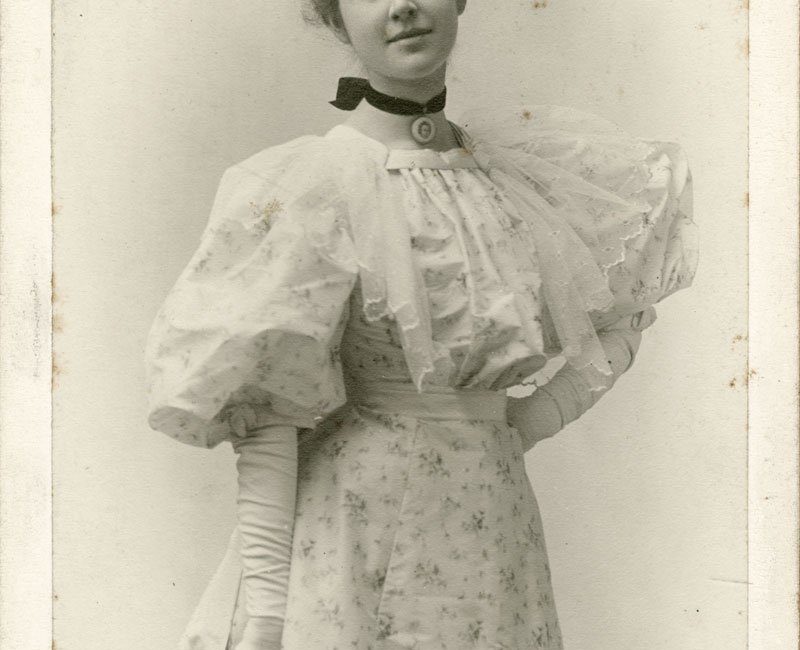
Backtrack: Helen McKay
The turn of the century was a pivotal era for the Indiana arts world—and for young painter and sketcher Helen McKay in particular. In 1902, Herron School of Art opened in the home of one of Indiana’s most famous painters, T.C. Steele. The 27-year-old McKay took a post as a teacher there, and before the year 1903 was rung in, she married Steele’s son, Rembrandt “Brandt” Steele, himself a well-known artist.
Helen Steele, a graduate of Shortridge High School and the Art Institute of Chicago, painted, carved wood, did leather-workings, and designed stained-glass windows—a medium in which her husband excelled, too. But her artistic talents and ambition soon began earning her a reputation of her own. In 1903, The Richmond Item reported that Helen McKay Steele, president of the Indianapolis Sketching Club, was a “remarkably gifted young woman of an astonishing versatility,” even venturing that she “might be termed a latter-day pre-Raphaelite in feeling and instinct.”
In 1911, by then the mother of three sons, Steele began to write and illustrate an experimental children’s page on Sundays in The Indianapolis Star. In December 1911, several months after the new page was introduced, an advertisement in the Star called it a “well-drawn, well-printed, and thoroughly interesting page for children.” It stood out from the kid-oriented comics of the day (for instance, the popular Sambo strip), which, according to the Star, taught “irreverence for parents and older people, and a hideous caricature of races and types of characters which could not fail to breed in children the meanest forms of race and class prejudice.” Steele’s page, on the other hand, was considered both beautiful and educational, teaching young readers tolerance and important topics of the day.
This modern concept and Steele’s work drew positive attention, even on a national scale. In January 1912, the Star quoted the editor of the national magazine The Outlook, who wrote that Steele’s page “lifts the supplement entirely out of the mire in which it has floundered.”
Still, for reasons that have been by now lost to history, Steele’s page only ran in the Star for a little longer than a year, even though in 1913, she was recognized in Who’s Who of American Art.
Over the years, Steele painted murals in Indianapolis schools, but she didn’t garner much attention outside of society pages. When she died in 1947, The Indianapolis News ran her obituary with the title, “Cultural Leader/Artist is dead.” The obituary noted that, among her accomplishments, she had, for a time, “drawn an illustrated page for children in an Indianapolis newspaper.”
Steele is buried at Crown Hill Cemetery beside her husband. His work is still celebrated in Indianapolis design circles, even if hers must be hunted out of the dusty archives of old newspapers.





